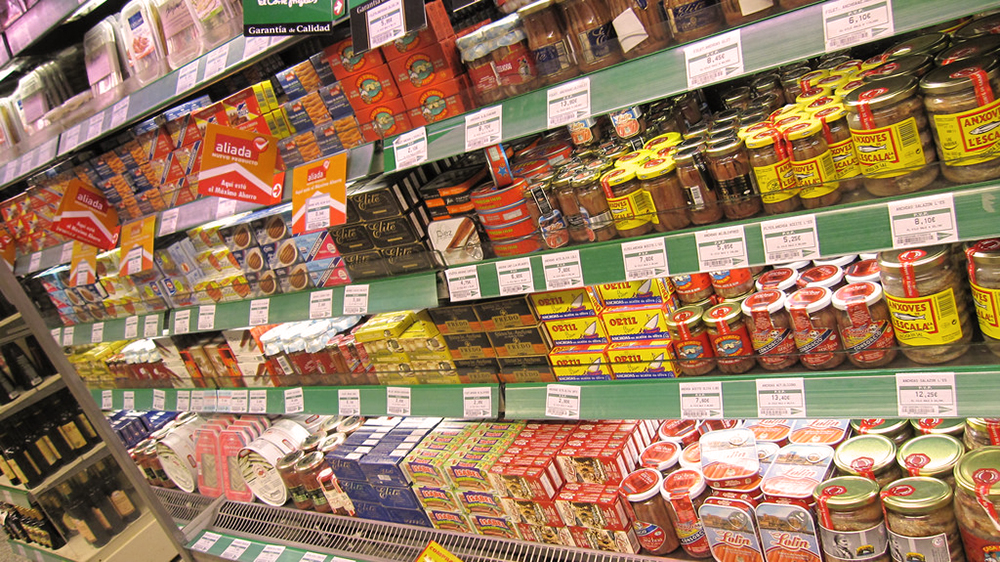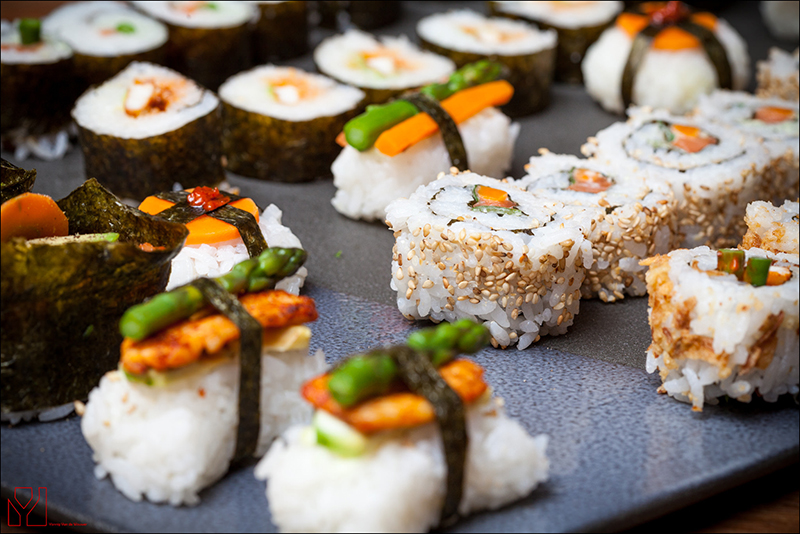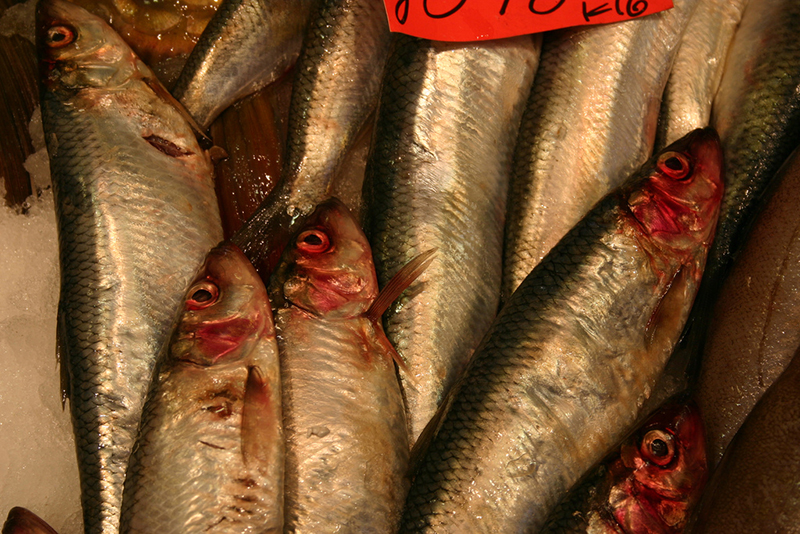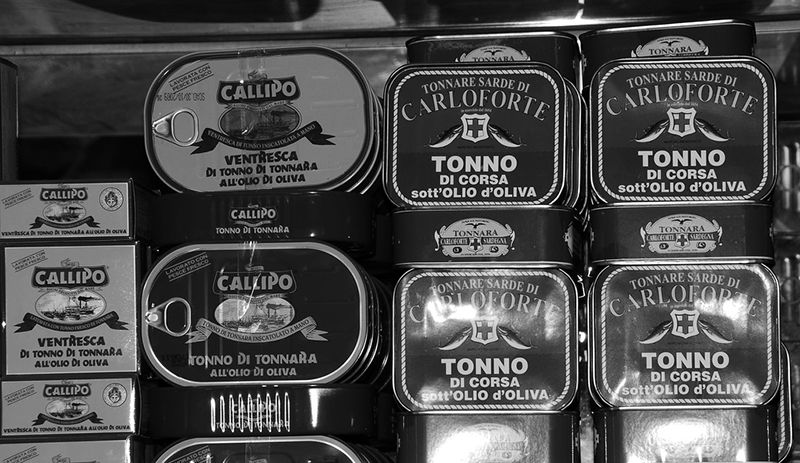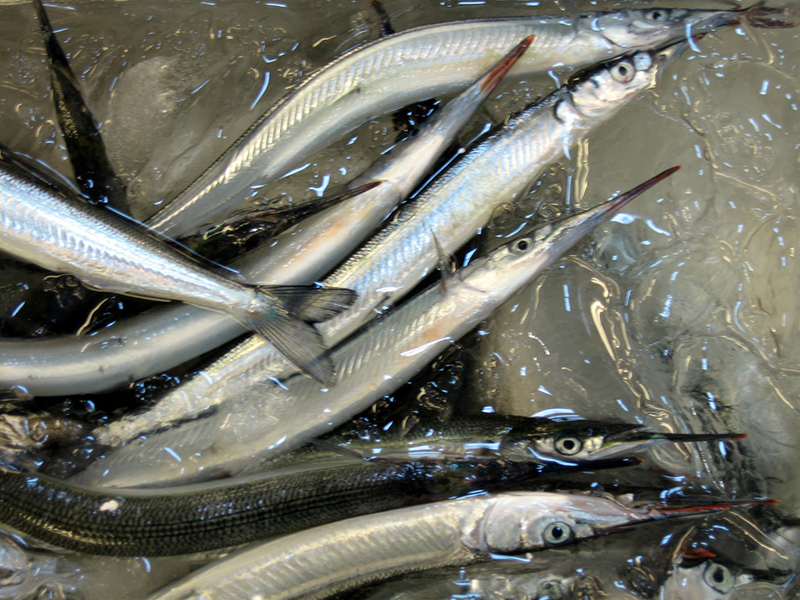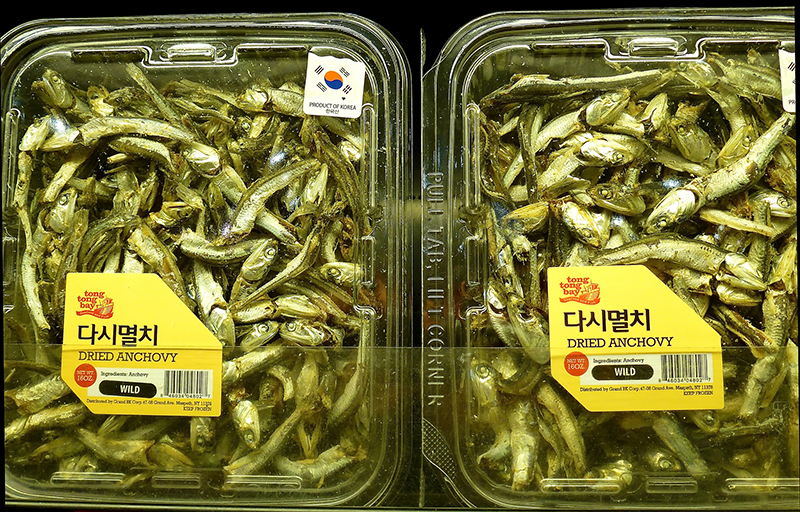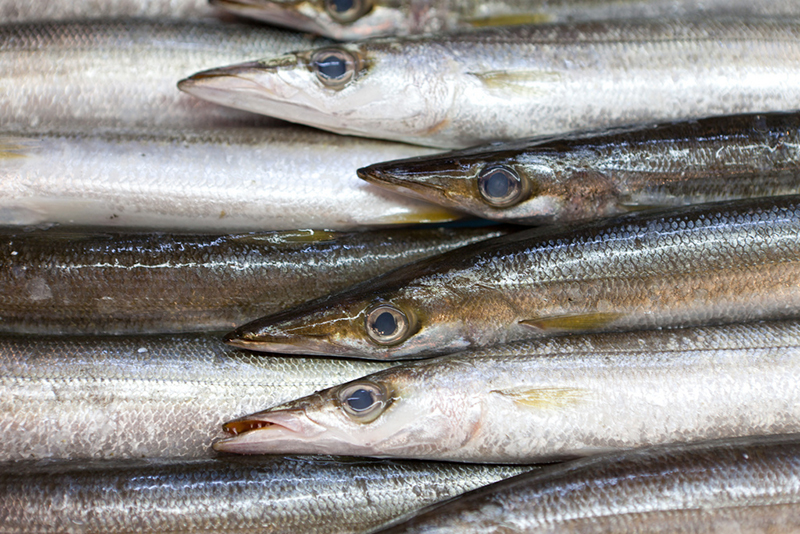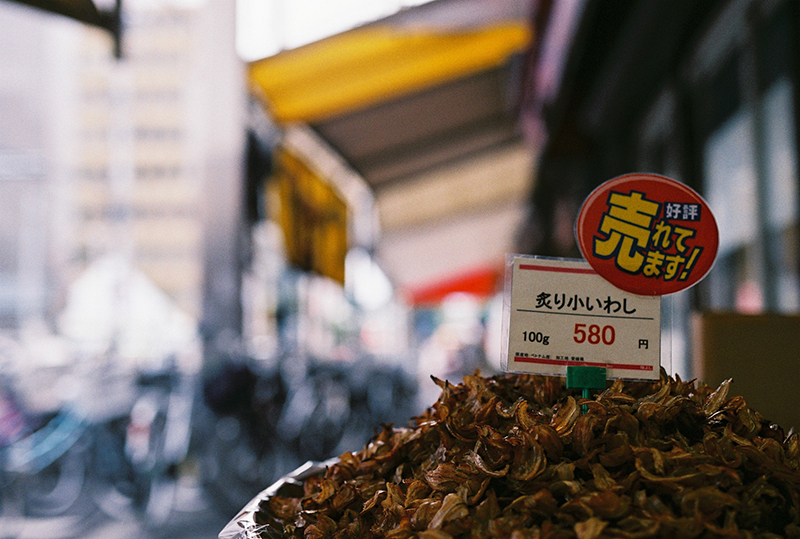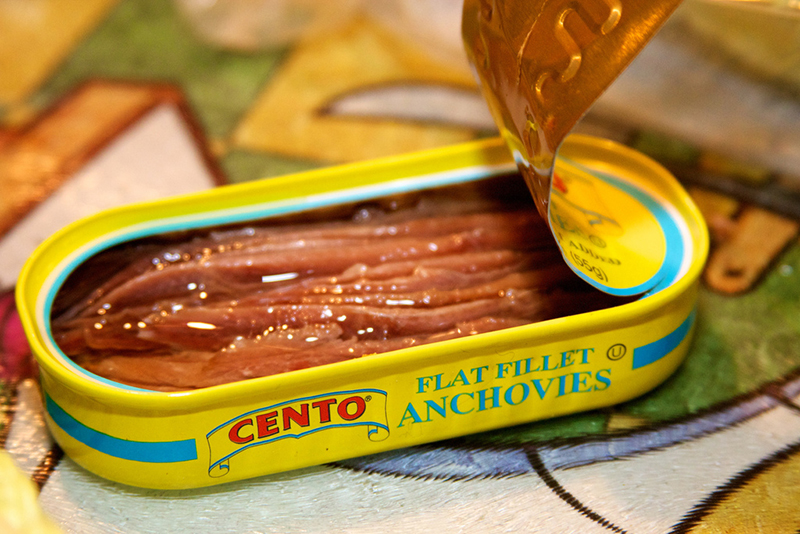Sushi is old hat in America. Since getting popular during the 1980s and ’90s, sushi has integrated itself into our everyday lives, appearing everywhere from mainstream grocery store cold cases to TV shows and corner restaurants. You see it in malls and on college campuses. Yet some people still find the idea of eating raw fish repellent. For those who hesitate, sitcom writer Phil Rosenthal offers some wisdom to help break the ice on his food show I’ll Have What Phil’s Having. “Here’s how you get into it. You ever have smoked salmon?” he says. “You ever have lox? Lox is the gateway sushi.” I have no motivational equivalent for canned fish. Most Americans are grossed out by the smell, let alone the idea, of canned fish. The fear is as irrational as arachnophobia. It resists logic, but I still can’t resist trying to make sense of it.
One reason I’m so fascinated by people’s aversion is my own devotion to the stuff. I eat canned fish almost weekly. For breakfast, I’ll heat Japanese glazed saury in a skillet to serve over warm white rice. For lunch, I’ll lay oil-cured Spanish anchovies on toasted white bread. On a solo trip to Tokyo, I ate a one-Yen can of sardines for breakfast outside my hotel window and sent a photo of the precarious set up to my other half Rebekah back in Oregon. Pretty much every white person I know thinks I’m disgusting. I think they’re missing out.
In North America, small silver fish are so undervalued that they’re mostly ground into dog food and fertilizer. But small tinned wild sardines, saury, herring, and anchovies are very popular throughout Europe and Asia, and they’re super healthy for how inexpensive they are. Japan has some of the best selections. It makes sense. Japan is an island nation. The ocean surrounds it on all sides, and Japanese culture developed around that intimate relationship with the sea. Marine life composes part of the Japanese identity, their iconography, their historic paintings and myths, brand names, band names, economy and poetry, and of course, their cuisine. Even when Japan was vegetarian by royal decree, fish was the one meat people could eat. They eat fish raw. They eat it grilled. Naturally, they adopted preservation techniques to preserve certain foods out of season, and to stockpile reserves for lean times. They salt fish, smoke fish, dry, pickle and ferment fish. Their system works beautifully. When Europeans introduced modern canning in the 19th century, the Japanese adopted that, too, adding one more technique to their sophisticated methodology.
The enormous food halls in modern Japanese grocery stores, called depachikas, stock a staggering array of brands and types of canned fish, and the average convenience store, or combini, sells great stuff, too. The labels have their own aesthetic appeal: brand names written in watery paint brush strokes; quality texture tan paper; splatters of what look like squid ink to frame the silhouette of a yellowtail tuna. Because I can’t read Japanese, I have to ask clerks about contents: is this iwashi? Is this sanma? Saba? The cans whose Japanese names I didn’t recognize, I sometimes bought anyway. I like a surprise. I also want to taste new types of fish. Not everyone does.
Americans will shove just about anything in our mouths, from e-cigarettes to dirty dollar bills at strip clubs, along with all the processed crap that passes for food in our country, yet we treat canned fish as the oceanic equivalent of potted mystery meats like SPAM, more fit for cats than humans. How come? The gag reflex is clearly culturally transmitted, one we’re taught or simply mirror by example. It isn’t inborn. In October, 2014, Canadian publisher Arsenal Pulp Press published an expanded version of the book Tin Fish Gourmet: Gourmet Seafood from Cupboard to Table, so clearly some Canadians appreciate a good tin. In August 2014, The New York Times ran a story listing reasons to eat fresh fish. It isn’t a movement, but a few cool joints like Barnacle in Seattle and Maiden Lane in New York’s East Village serve fish straight from cans, and some foodies like slurping anchovies down their gullet. Most gringos think this is nasty. It isn’t hard to understand why.
First, there’s the smell. The logic is: If canned fish are so good for you, why don’t they smell that way?
Paul Greenberg, the author of Four Fish and American Catch, figures that the main reason Americans shun canned fish is the scent and flavor. The US consumes 35% of the world’s canned tuna, but sardines, mackerel, and anchovies are too “fishy” for our taste. “My guess is that the average picky American eater wouldn’t like sardines, mackerel and anchovies fresh either,” says Greenberg. The trick is thinking of canned and fresh seafood as two different animals, so to speak. The best fresh fish is moist, flakey, and subtly sweet, where canned fish can be heavy, dense, the flavors dark and intense. They’re totally distinct sensory experiences. Some people, like customers at Spain’s Espinaler tavern, north of Barcelona, believe expert canning can improve seafood’s texture and flavor. They pay upwards of 156 Euros for a six-ounce can. That smell, though, will always be strong.
Second, there’s the temperature: Shouldn’t something like seafood be, I don’t know, refrigerated?
“Today with all of our interest in sushi and fresh-from-the-source everything,” says San Francisco Chronicle food reporter Tara Duggan, “we associate fish with ice-cold freshness, so room-temperature fish that has been in storage has a kind of disgust factor.” But room-temp storage is the point. Canning began as a way to preserve perishable foods. When Napoleon Bonaparte’s army needed portable rations in 1795, the Little Corporal offered 12,000 francs to anyone who could invent a reliable system of food preservation. In 1810, French confectioner Nicolas Appert’s method of sealing and boiling food in jars won the prize and voilà!, the world’s first MREs. In 1812, an American named Robert Ayars took an idea from French inventor Philippe de Girard, to preserve food in metal rather than glass containers, and Ayars produced America’s first commercial canned seafood. (He used New York oysters specifically.) Now the technology that protects these fragile items is the same technology that makes people nervous, which is funny since Americans don’t get cagey about beef jerky, even though it looks like something you find on the side of the road in the desert. Americans have become paranoid about germs and refrigeration: Don’t touch this; don’t touch that; wash your hands; disinfect! How long has that been out? Warm seafood seems . . . dangerous. But rather than encouraging the sort of spoilage you see in the houses of hoarders, canning inhibits the growth of harmful microbes and protects more of the food’s flavor, aroma, and nutrients than Appert’s predecessors ever did. Recognizing this takes some adjustment, but canned fish isn’t an acquired taste. Some people never acquire it, and that’s okay. But trying it once doesn’t require much either.
Third, there’s the social stigma.
“For immigrants coming to America,” says Gastronomica founding editor Darra Goldstein, “meat was always the prize, the food they couldn’t afford in the old country.” Canned sardines used to be so fancy that, in the late 19th century, renowned jeweler Tiffany & Company made fancy silver forks to serve them. As a kid in coastal California, Chow senior editor John Birdsall remembers when “canned food was a sign of status — you could afford all kinds of curiosities, white asparagus from California and truffles from France and cherries from Michigan.” It was exotic. After WWII, Clarence Birdseye’s — the Birdseye food guy — advanced freezing techniques replaced canning as the go-to method, and as Goldstein says, “canned foods became somewhat déclassé, and the American fish canning industry didn’t bother to put greater effort into canning carefully: When you mix canned tuna fish with lots of mayonnaise, does it really matter?” For immigrants trying to assimilate, there were other issues.
“Cheap canned seafood was a reminder of hard times,” says chef Scott Snyder, owner of Portland’s Sephardic Jewish Diaspora chef, and a regular sardine griller himself. Many Americans still think of canned food as poverty food or something you stockpile for emergencies. If meat is still the prize, then fresh cuts are the ultimate trophy, a sign of wealth and achievement. And when you have good weather, cheap meat, and a functional grill, why choose to eat the carnivorous equivalent of instant ramen?
There are the skin, bones, and heads. Despite growing interest in origin, home brining and pickling, the modern nose-to-tail movement often stops at the shoreline. “People are just too uncomfortable with bones,” says Goldstein. But it’s cheaper and easier to cram entire sardines and sprats in the can than to pay a factory worker to remove the tails, heads, and bones. “When you can these fish you cook them until their bones become edible,” says Greenberg. “That is nutritious to some and disgusting to others.” The thing is: Americans are into appearances. Few of us want evidence of the life our food lived. Who cares that skin and bones contain calcium, and that wholeness is a measure of healthiness, with canned fish so unprocessed that they look the way they did when fishermen pulled them from the ocean. That stuff is fugly. “Skin and bones” is a description used for the old and withered, not the living. Also, who wants to work hard at dinner, plucking spines and ribs from miniature fillets, when we’ve worked hard enough all day already?
Then there’s the price tag. At $2.99 for a tin of smoked Portuguese sardines and $2.69 for three and a half ounces of seasoned Japanese saury, canned fish seem too inexpensive to trust. We’re American. We know you usually get what you pay for, but if you buy decent brands from trustworthy countries, cheap shouldn’t mean pet food quality. Often, the opposite is true.
I get it. I don’t blame people for being grossed out by all this. But here’s my logic: For less than the price of a burrito, a can of silver fish gets you hefty amounts of protein, brain-building omega-3 fatty acids, vitamins A and D, phosphorus, and calcium. Protein sustains your energy. Omega-3 fatty acids like DHA and EPA may reduce the growth of breast, colon, and prostate cancer, lower blood pressure, prevent heart disease, possibly lessen the effects of depression and the cognitive degeneration associated with Alzheimer’s. Many little fish like sardines and saury sit low enough on the food chain that they aren’t as polluted as higher order feeders like tuna and swordfish. Many reproduce quickly, so they’ve rebounded from past overfishing and can be responsibly managed. That’s why the Monterey Bay Aquarium’s Seafood Watch lists wild-caught Pacific sardines as a “Super Green” sustainable, healthy choice. At a time when the overfished Pacific bluefin tuna faces extinction and farm-raised salmon’s nutritional and environmental costs are hotly debated, shifting our eating habits from large fish to durable prey or “bait” fish is smart environmental stewardship. It’s called eating lower on the food chain, and it proves how wild unpolluted foods like these are an increasingly important, underutilized resource.
The last US sardine cannery closed in 2010. As Barnacle’s owner Renee Erickson says, “I’d like to see more people canning themselves.” Barnacle cans its own smoked Alaska herring off-site, and it serves Mediterranean sardines and anchovies straight from the can. “People are always surprised how much they love it when I put a tin down in front of them.”
I wish I lived in a country where more people shared my love of this stuff. With the exception of my friend Jim, whose grandmother in Nebraska used to make him sardine sandwiches (white bread, mayo, and mustard, and the cheapest canned sardines), I’m the only person in my social circle who savors canned fish. In Japan, things are different.
Wandering an aisle of tinned fish at a Japanese depachika was a dream come true, but I needed help identifying some of them. At one Tokyo department store called Odakyu, I carried a few tins to the register and asked the teenage clerk what fish was what. He had black spikey hair and oily skin, and he wore a blue apron over black slacks. He greeted me with a bow while bagging an older woman’s vegetables. I pointed to the first tin. “Is this sanma?”
“Sanma?” he said. “No. Iwashi. Eee —” His eyes darted around as he struggled for the English word. The woman in line looked at the can and at me and then smiled. The boy smiled, too. He couldn’t think of the English word for iwashi. I couldn’t help. “Iwashi,” he repeated with a shrug. “Sorry.” We laughed and nodded and I retreated into an aisle where I Googled iwashi. It meant sardine. When I found this out, I returned to the register smiling and said, “Iwashi means sardine!” I pointed to the tin and said, “Sardine. Yes. I love sardine. Thank you.”
He laughed and bowed and pushed register keys. “Thank you!”
I returned to the shelves of cans. There were so many to try — too many, based on my limited ability to tell what was what. Some drawings on the labels provided positive IDs: tuna (toro); crab (kani); shrimp (ebi), salmon (sake). Other drawings showed long, slender fish whose bodies looked similar enough that I couldn’t differentiate: sardine, sanma, or mackerel?
I knew the word saba, so when a clerk entered the aisle, I pointed to a few cans and asked her, “Sanma or saba?” That helped. In response, she either answered ‘no,’ ‘yes,’ or the name of other fish whose names I didn’t recognize. I returned those to the rack and put the sanma, saba, and iwashi in my basket. “Arigatou!” I said smiling. “Arigatou gozaimasu,” she said back. Yes, I thought, I am this big of a dork. I get excited about canned fish. But what can I say? Taking these tins back was as exciting for me as taking Japanese pressings of beloved records back home, or seeing Noh Theater, and cans were both practical and a keepsake — at least that’s what I told myself. Hauling this much liquid and protein weight around in my rolling luggage for three weeks to take back to the States wasn’t entirely practical, though I could rationalize it because eventually I would eat that weight. But at the end of my trip, Narita airport security confiscated half of the tins.
“We keep,” one security agent said. “Very sorry. Too much,” meaning, they exceeded the allowable fluid limit. “So sorry.”
Really? It’s fish, I said. It’s mostly solids, not water. With politeness to match theirs, I begged: “Please, I’ve carried these around for weeks. Very little water. Mostly meat. Please?”
The security staff bowed and smiled as they moved the cans from my luggage over to an area beside the conveyor belt.
We stared at each other, their faces scrunched with remorse. I kept hoping my pitiful state would make them reconsider. “Mostly meat,” I pleaded.
“So sorry,” they kept saying with a bow. I thought, “You suck!” but it was hard to be angry with such considerate people who were simply doing their job, and frankly, I should’ve known better. The liquid limits were clearly listed online. My poor planning wasn’t their problem. Fortunately, I’d mailed a bunch of cans home for an exorbitant rate the previous week. Next time I’d put the cans in my checked luggage.
I shouldered my carry-on and said, “No problem. Enjoy your lunch, guys.” Passengers had already boarded my plane because I was terrifyingly late. With a bow I said goodbye — to them, to my fish, and to Japan. I hope the staff ate the confiscated cans. It’s sad to think of them going to waste. •
Images courtesy of ArtBrom, Yannig Van de Wouwer, James F Clay, Matteo X, Kent Kanouse, liz west, Shawn Clover, halfrain, Mitch Kasanami, and Nathan Forget via Flickr (Creative Commons).
